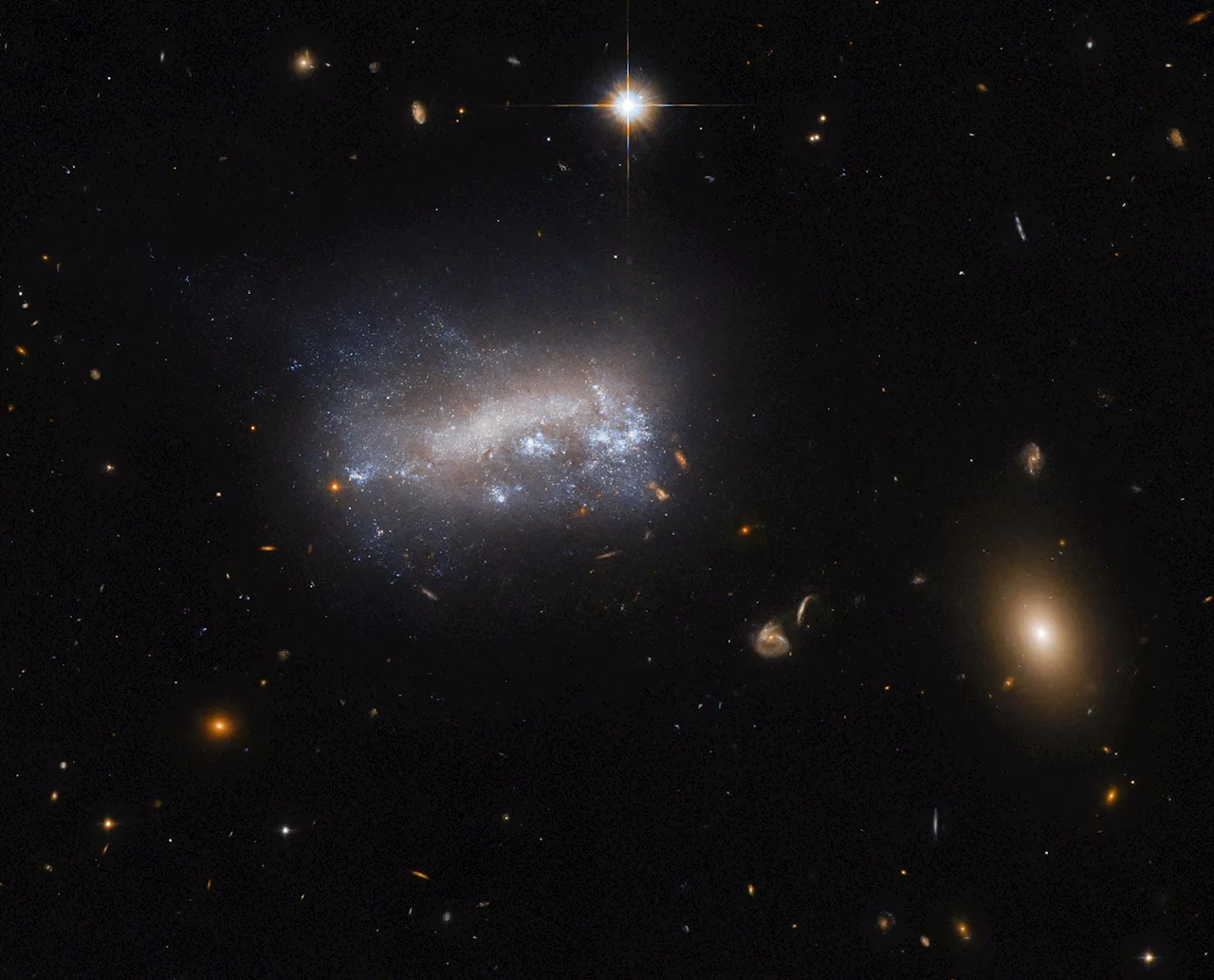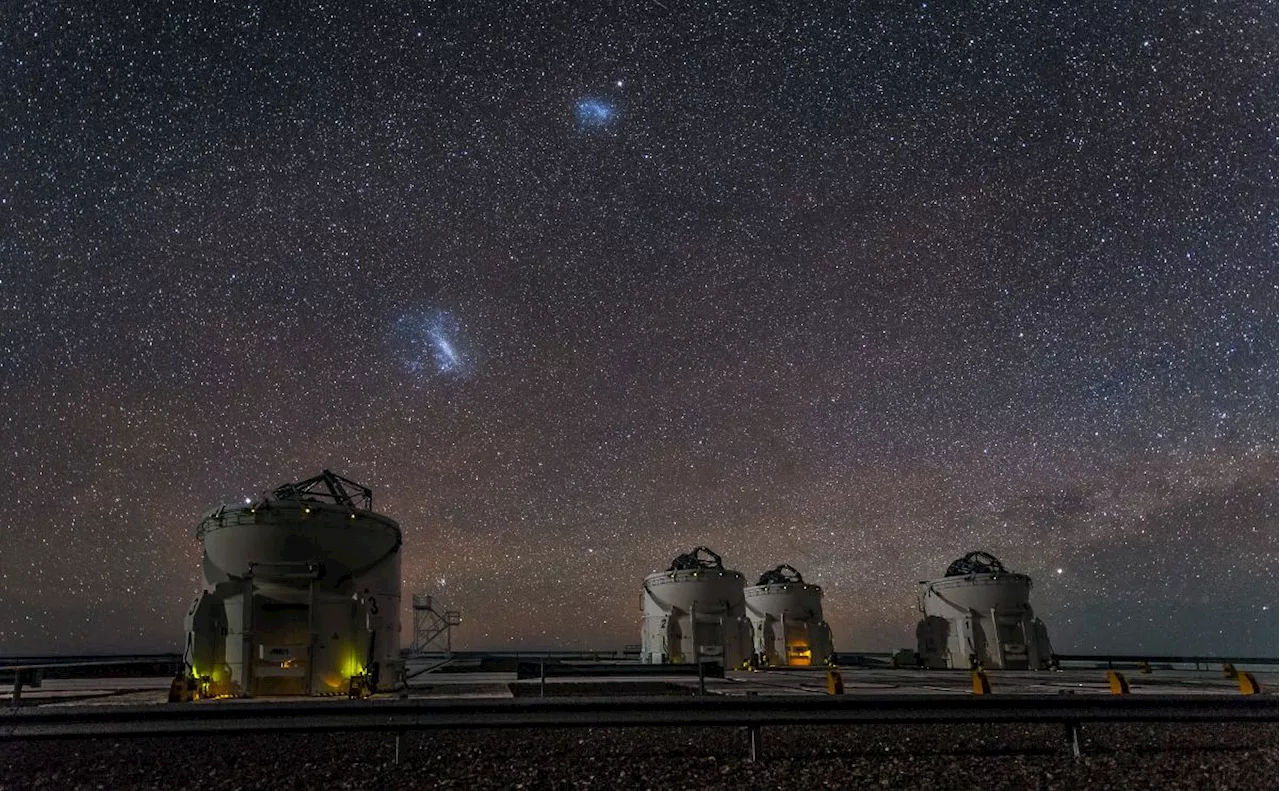Astronomers found an extremely metal-poor star in the Large Magellanic Cloud. It shows how different star-forming environments can be.
This image shows the Large and Small Magellanic Clouds in the sky over the ESO's Paranal Observatory and the four telescopes of the VLT. Image Credit: By ESO/J. Colosimo - http://www.eso.org/public/images/potw1511a/, CC BY 4.0, https://commons.wikimedia.org/w/index.php?curid=38973313
Population III stars were the Universe’s first stars. They were extremely massive, luminous stars, and many exploded as supernovae. Image Credit: DALL-E “We want to understand what the properties of those first stars were and what were the elements they produced,” said Chiti. These metal-poor stars are difficult to find. Most of the stars in the Universe resulted from successive generations of stars; their enriched metallicity is a testament to that. Our Sun is a metal-richstars are out there. Since astronomers will likely never find an ancient Population 3 star, the Population 2 stars with the lowest metallicities are the next best things.
Finding such metal-poor stars in the LMC allowed astronomers to compare the star-forming conditions in that satellite galaxy to those in the Milky Way. The comparison can help astrophysicists understand how these star-forming conditions may have differed.
United States Latest News, United States Headlines
Similar News:You can also read news stories similar to this one that we have collected from other news sources.
 Cloud Binary: Revolutionizing Cloud Solutions for DApps And AI ProgramsCrypto Blog
Cloud Binary: Revolutionizing Cloud Solutions for DApps And AI ProgramsCrypto Blog
Read more »
 Finally, an Explanation for the 'String of Pearls' in Supernova 1987AThere may be an explanation for the appearance of a 'string of pearls' around Supernova 1987a in the Large Magellanic Cloud.
Finally, an Explanation for the 'String of Pearls' in Supernova 1987AThere may be an explanation for the appearance of a 'string of pearls' around Supernova 1987a in the Large Magellanic Cloud.
Read more »
 Magellanic Spiral Galaxies Decoded: Hubble Captures LEDA 42160Science, Space and Technology News 2024
Magellanic Spiral Galaxies Decoded: Hubble Captures LEDA 42160Science, Space and Technology News 2024
Read more »
 Image: Hubble finds a field of starsThis image from the NASA/ESA Hubble Space Telescope shows a globular cluster called NGC 1651. Like another recent globular cluster image, NGC 1651 is about 162,000 light-years away in the largest and brightest of the Milky Way's satellite galaxies, the Large Magellanic Cloud (LMC).
Image: Hubble finds a field of starsThis image from the NASA/ESA Hubble Space Telescope shows a globular cluster called NGC 1651. Like another recent globular cluster image, NGC 1651 is about 162,000 light-years away in the largest and brightest of the Milky Way's satellite galaxies, the Large Magellanic Cloud (LMC).
Read more »
 Woman found dead after large explosion at American Fork homeOne woman was found dead following an explosion at a duplex in American Fork Wednesday morning.
Woman found dead after large explosion at American Fork homeOne woman was found dead following an explosion at a duplex in American Fork Wednesday morning.
Read more »
